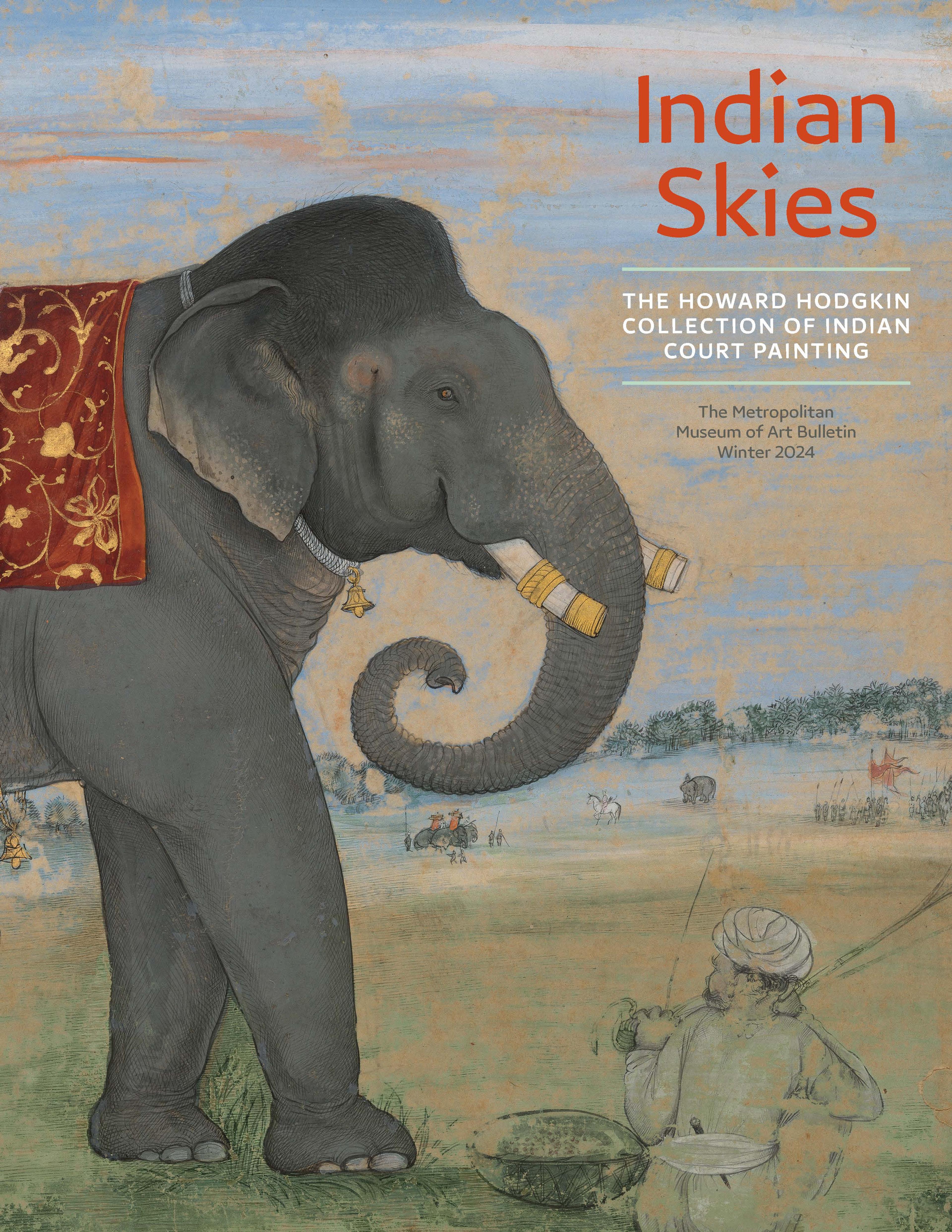The Disrobing of Draupadi
This painting depicts one of the most shocking episodes in the Mahabharata: the attempted disrobing of Draupadi, virtuous wife of the Pandava brothers, after they lose everything in a game of dice. The painter illustrated the moment when Duhshasana tears Draupadi’s clothes from her, only to see them replaced miraculously by new ones, ensuring that Draupadi’s virtue is preserved. As Duhshasana’s fury escalates, so too does the pile of robes on the floor, represented as a wondrous stream of multicolored textiles. Opposite, the humiliated Pandava brothers sit huddled together. One reaches for his weapon to defend Draupadi’s honor, but he is restrained by Yudhishthira, whose recklessness led the clan into this impasse. Above, an arcade opens onto a court scene in which the Kaurava nobility are presided over by the blind king Dhritaraahtra. Each character is named in small inscriptions in the local Takri script
Artwork Details
- Title: The Disrobing of Draupadi
- Artist: Attributed to Nainsukh (active ca. 1735–78)
- Date: ca. 1760–65
- Culture: India, Himachal Pradesh, Guler
- Medium: Opaque watercolor and gold on paper
- Dimensions: Image: 9 11/16 × 13 7/16 in. (24.6 × 34.2 cm)
Framed: 18 1/8 × 14 1/2 × 3/4 in. (46 × 36.8 × 1.9 cm) - Classification: Paintings
- Credit Line: Howard Hodgkin Collection, Purchase, Gift of Florence and Herbert Irving, by exchange, 2022
- Object Number: 2022.247
- Rights and Reproduction: Image © Ashmolean Museum, University of Oxford
- Curatorial Department: Asian Art
More Artwork
Research Resources
The Met provides unparalleled resources for research and welcomes an international community of students and scholars. The Met's Open Access API is where creators and researchers can connect to the The Met collection. Open Access data and public domain images are available for unrestricted commercial and noncommercial use without permission or fee.
To request images under copyright and other restrictions, please use this Image Request form.
Feedback
We continue to research and examine historical and cultural context for objects in The Met collection. If you have comments or questions about this object record, please complete and submit this form. The Museum looks forward to receiving your comments.
